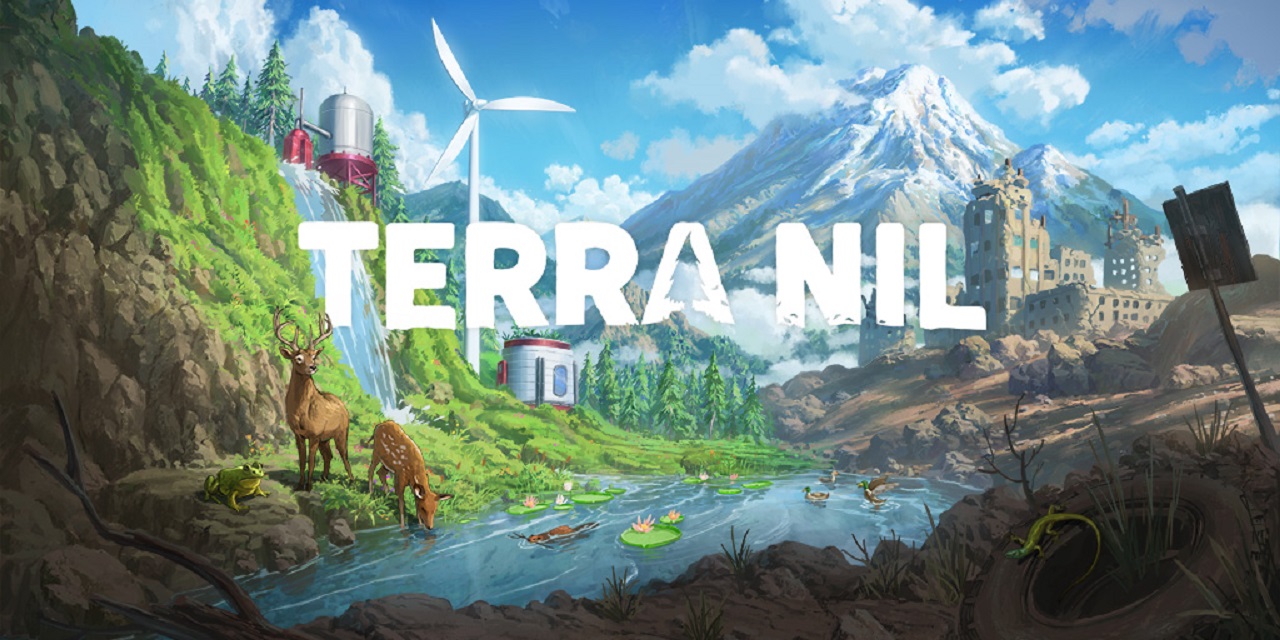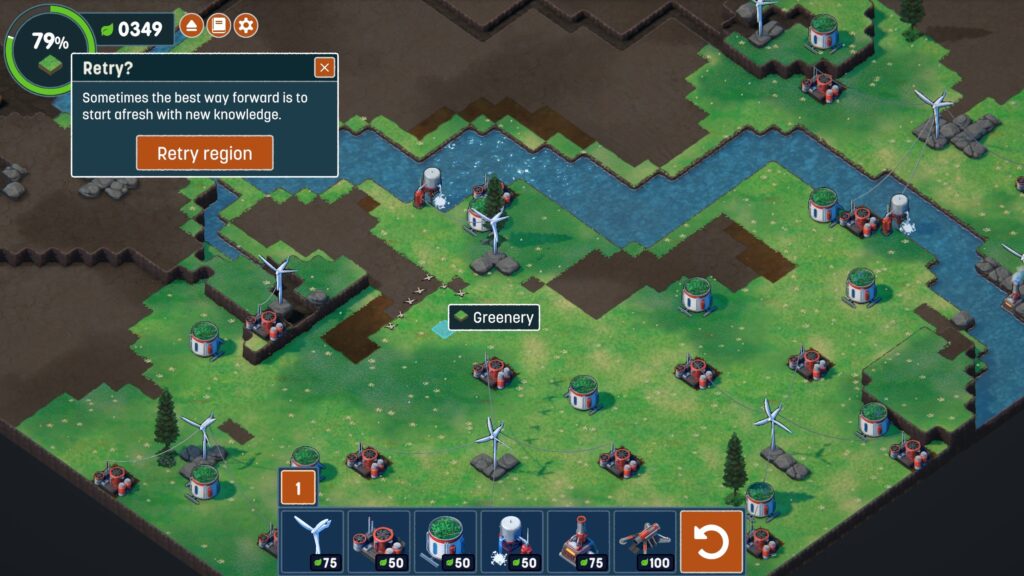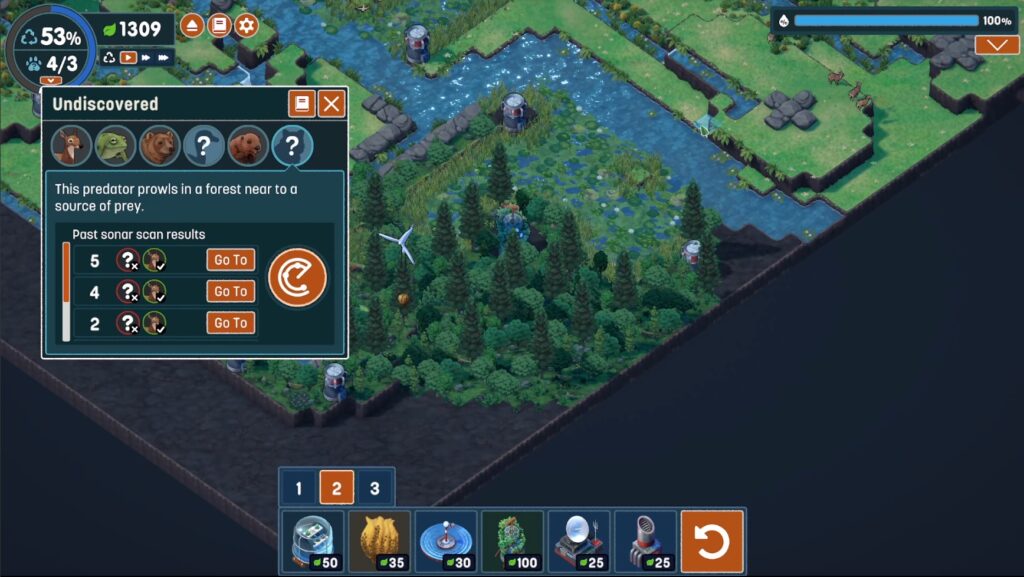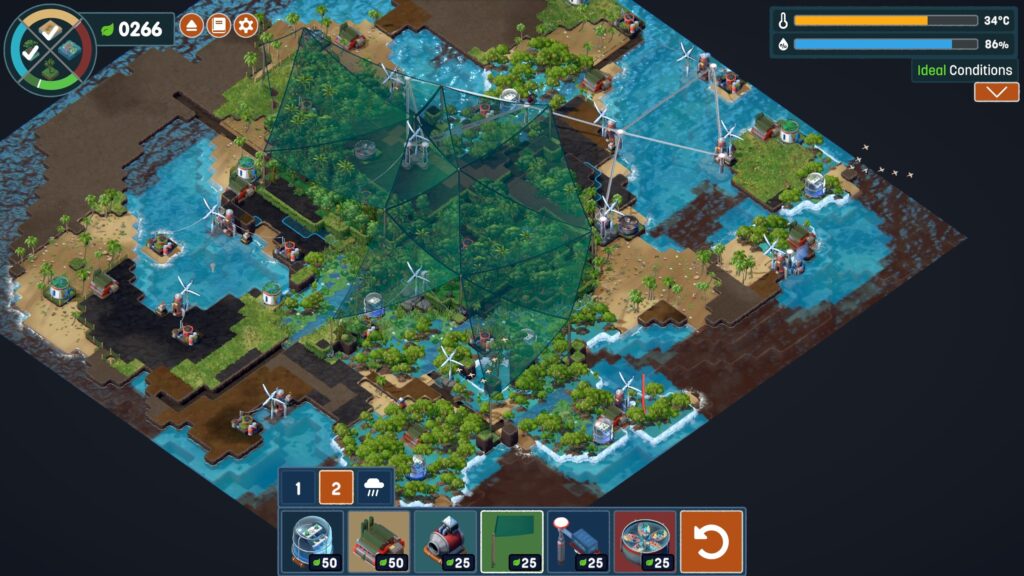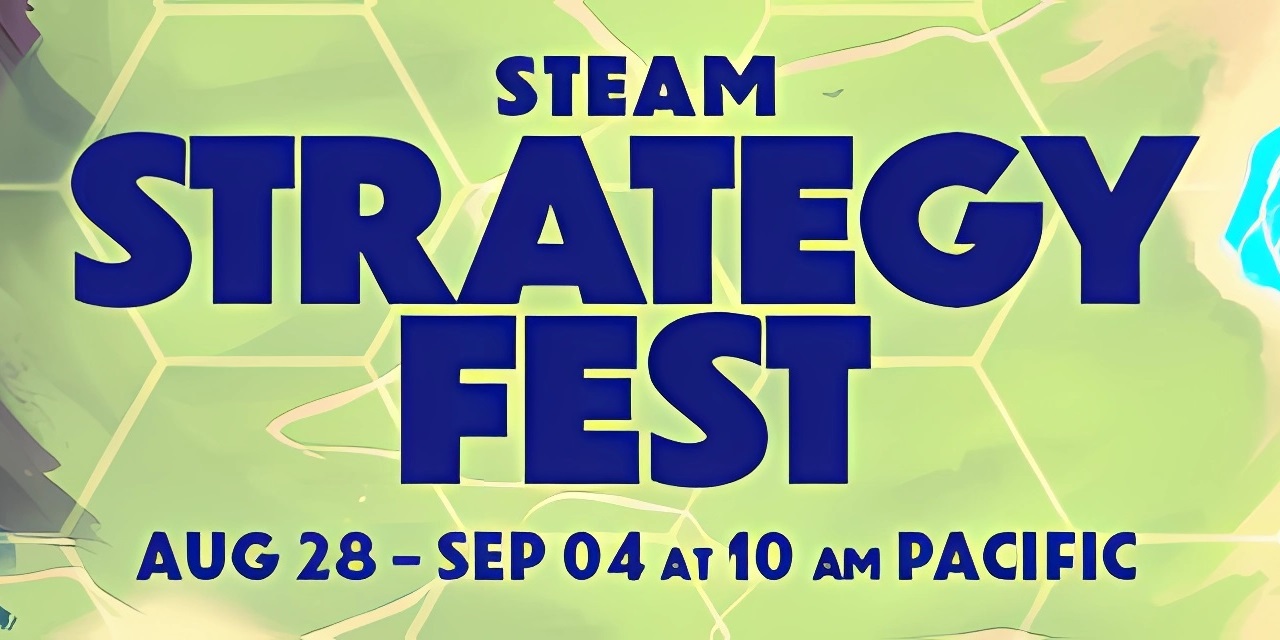Terra Nil is an eco-conscious city builder developed by Free Lives and published by Devolver Digital. It launched on March 28, 2023, on PC and Netflix and is a fascinating and beautiful game that had me lose hours each play session without realising the time. Where normal city builders have you raising cities, this has you purifying the soil, cleaning rivers and oceans, plant forests and balance the climate to reintroduce wildlife and restore one of four biomes back to the way nature intended. It becomes more about solving the biome’s requirements like completing a puzzle as opposed to city building, especially because we ultimately need to recycle the buildings we create.
The last game that I played where nature restoration was the goal was a 2020 indie title called Cloud Gardens. In Cloud Gardens you start with a post-apocalyptic scene, and you plant seeds to have greenery grow over the wasteland objects like signs, a bus, decrepit buildings and so on. In Terra Nil, we start with a tile-based arid landscape in a river valley. We need to add power via wind turbines that can only be placed on rock tiles and then get to work cleaning the soil using toxin scrubbers, followed by irrigators to water the land and convert soil to greenery.
Once we have spread out from our starting point, converting enough soil to greenery, we unlock the next machine we can utilise, the water pump. This machine fills areas of dry riverbeds with clean water, and in doing so adds greenery tiles on either side of the riverbed. This is followed by unlocking a calcifier which crystallises select greenery tiles, turning them into rock tiles where we can add more turbines and start to spread out our efforts, converting more land to greenery. Once we have enough greenery coverage across the biome, we enter the second phase of each playthrough where we need to increase the diversity of growing plants while also balancing the climate’s humidity.
To do this we convert greenery areas to wetlands using a hydroponium that replaces the irrigators we placed in the first phase. We can add beehives to trees which pollinate nearby greenery, creating fynbos flowers, and then came a machine that is devastating to the work you have done so far, but proves beneficial in the overall process – a solar amplifier. This is a contraption that focuses sunlight onto an area of greenery to spark a controlled burn. We then watch as the greenery catches fire leaving behind nutritious ash. Once we start to raise the temperature and humidity of a biome, this will start to attract fauna to your lands and we research and scan the areas looking for undiscovered animals.
Picking the silhouette of a species and then scanning areas will help you work out the terrain type they prefer, whether it’s a mix of greenery and forest, or they require sandy beaches and access to coral reefs. This requires you to the modify your initial plans, such as performing a controller burn to convert greenery to forest or creating a monorail system to harvest the coral from the reef. In one instance I saw some deer grazing but I was trying to discover a new animal species. I did a controller burn on the forest near then but it spread to their greenery, forcing the deer to run to the last remaining green square left, but sadly the fire took that too. To find one species, I killed another and felt terrible.
Once you do finally reclaim the wasteland and create the perfect environment for the specific biome, we are given an option to continue or to appreciate watching the flora and fauna flourish which is a nice touch. Completing one biome shows us a planetary view and we can move onto the next biome that requires our help, in this case the desolate island. The final two biomes are a volcanic glacier and a flooded city. Each biome has different machines to utilise depending on the landscape and topography, but essentially the overall aim remains the same – to take the land from a polluted wasteland to a thriving environment that supports life, while leaving as minimal impact as we can.
It’s a very calming and feel-good gameplay experience and never felt difficult, but also didn’t feel like a walk in the park either. The music was perfectly suited to the gameplay style and the graphics were simple yet detailed, especially as we can zoom right in. I enjoyed watching animals grazing and moving around the grass, forests, mangroves and reef we help create.
Overall, Terra Nil is a super chilled builder/puzzle hybrid where the focus is on encouraging the growth and restoration of the climate rather than building vast cityscapes. It plays more like a puzzle game than a city builder as you work to raise the temperature and humidity such that wildlife starts to flourish. The final act of recycling the machines as the environment thrives on it’s own is a cleansing one, and even better that we can appreciate our work as a final touch before moving on.
This review utilised a Steam key provided by Devolver Digital and Terra Nil is available to play now on Steam, Epic Games Store, GOG and Netflix. Finally, here’s an important note from the developers at Free Lives:
“From the very beginning of development, we’ve wanted Terra Nil to have a real-world impact. We will donate 8% of our profits from sales of Terra Nil on Steam to the Endangered Wildlife Trust in support of their efforts to preserve and restore ecosystems. We felt that the Endangered Wildlife Trust were the perfect organization to contribute to because they work in a plethora of conservation disciplines in our home of South Africa. We are working with them to produce a short film that will show how Terra Nil connects to real-world ecological efforts.”
#roundtablecoop

